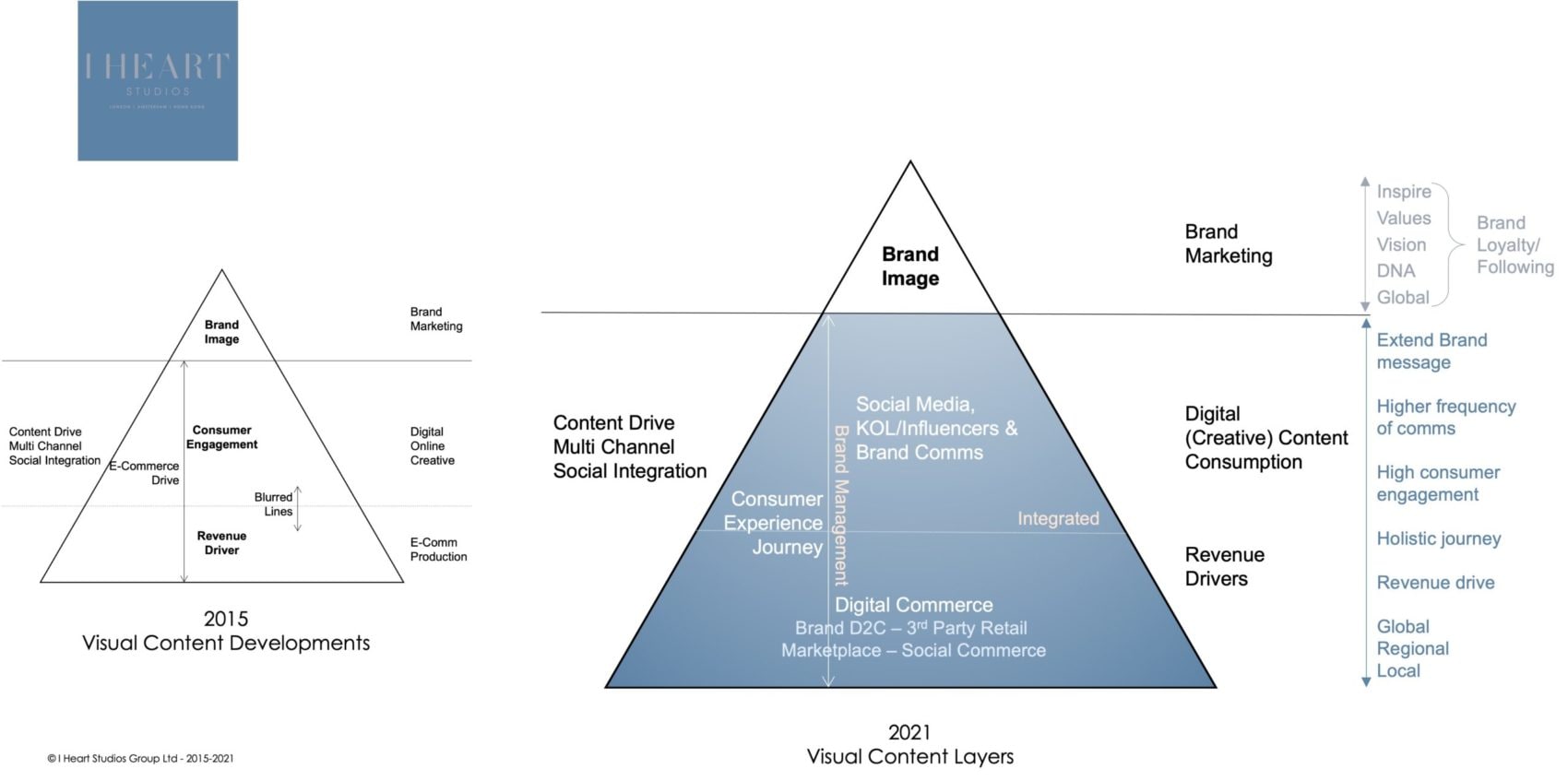Over the years, we have been surprised by the various gradations of brand visual content execution across channels, geographical locations, and 3rd party partners. Inconsistent visual execution impacts not only the brand experience, but also the conversion rate, customer returns and it ultimately leads to lost revenue opportunities.
We strongly believe that the consumer only sees a brand as one and is looking for a consistent and coherent brand visual execution. However, often this is not the case, local and international brands do not control their content strongly enough, leading to inconsistencies in their brand/product visual content.

While global corporates try to address this challenge by providing global guidelines (“Think Global”) in combination with some local autonomy to ensure relevance (“Act Local”), it is not always easy to achieve in practice. This drives a disconnected brand experience at the consumer level, and sub-optimises the brand halo effect. It can also result in higher total content costs as content is created multiple times across geographies, most likely across the various channels such as e-commerce, social, public relations (PR), wholesale, 3rd party retail, visual merchandising (VM), etc.


Brand visual management drives consistency in content execution, brand experience and enhances the consumer experience. A brand visual guideline, DNA, and directive are essential to set boundaries and create visual handwriting that guides and directs all levels of content creation.
This challenge is only accentuated in the digital world. Brand visual management consistency across the global digital world and the consumer experience is key to drive brand experience and deliver a quality brand proposition. Therefore, the brand visual management execution should be defined, managed, and executed under the direction and supervision of the (global) brand management/owner. This will ensure that the One Brand, One DNA, and One handwriting approach can deliver a holistic yet recognisable consumer experience to stimulate the brand impact, demand, and conversion.

This is even more true at the product content creation level; visual content direction and management on the lowest level of brand content is important as each image impacts a commercial decision on either trade or consumer level. At the product content creation level, which is the lowest brand content level, it becomes even more true as a product image has a very high impact on commercial decisions. As many as 75% (Hubspot) / 87.6% (Ergonode) of the consumers say that the image drives their decision process. The visual content creation and direction can affect a commercial decision either on a trade or consumer level.
Every piece of content created at the product level and across the content pyramid (brand-social-trade/e-commerce) is a brand experience. The product content is the most frequent visual engaging with the consumer.

This leads to the conclusion that product visual content is the most critical (in comparison with brand marketing & social media) in the consumer journey, it is the final decision driver, as well as the last brand visual experience that most of the consumers will have in their journey.
This is true in fully managed channels, 3rd party managed channels, as well as marketplaces such as Amazon, T-Mall, Shopee, Momo, Lazada and many others worldwide.


Of course, regional/local relevance is critical in consumer connectivity. If executed within one (global) brand directive and handwriting, enablement of local adoption should be seamless and easy. But how can you deliver it? Where possible, manage your content in 3rd party channels and marketplace to maintain the consistent brand experience and consumer journey; nobody can do that better than you. To achieve the best result, work with content partners to optimise content creation, stretch content usage, optimise the investment in content, and generate the most significant ROI across all channels and regions.
Finally, there are many research pieces on consumer journeys and the impact of disconnects in product content experiences leading to loss of sales. Of course, this is true for offline, online, and fulfilment and all touchpoints in these customer engagements.


As outlined earlier, product content is one of the most significant elements in any consumer journey and for sure the most frequent interacting visual between a brand and its audiences. Therefore, management and execution of the product visual content requires attention, care, and focus within the brand strategy and execution.
I Heart Studios provides content creation solutions that enable, support, and execute content locally, regionally, and globally. We can help to create guidelines, directives, and standardisation across visual content and at the same time work with you either in-house, outsourced, or hybrid content creation set-ups. Through our operations in London, Amsterdam, and Hong Kong, we create tailor-made solutions for your content challenges/needs. Don’t hesitate to get in touch with us to start a conversation on building future solutions for you and your business!
Interesting reads:
The Importance of Building Trust with Brand Consistency
Harvard Professor Says 95% of Purchasing Decisions Are Subconscious
Visual Communication and Consumer-Brand Relationship on Social Networking Sites
5 Significant Facts – How Product Photography Can Impact Your eCommerce
Importance Of Good Product Photography To Drive Sales
Stop doing it wrong. The importance of product photos in e-commerce

